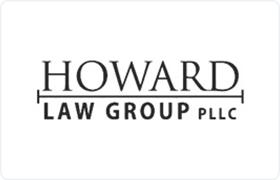Lancaster Bankruptcy & Debt Lawyer, Kentucky
Sponsored Law Firm
-
 x
x

Click For More Info:
-
Howard Law Group, P.L.L.C.
213 Saint Clair St Ste 101 Frankfort, KY 40601» view mapBankruptcy & Debt Where Dedication Meets Experience
At Howard Law Group, PLLC, our Frankfort lawyer has devoted his entire practice to helping clients understand their rights and helping clients make empowered legal decisions.
800-716-8131
J James Rogan
Bankruptcy
Status: Inactive *Status is reviewed annually. For latest information visit here
Chadwick B Hammonds
Accident & Injury, Bankruptcy, Criminal, Divorce & Family Law
Status: In Good Standing *Status is reviewed annually. For latest information visit here
Kimberly Ross Taylor
Bankruptcy
Status: In Good Standing *Status is reviewed annually. For latest information visit here
Mark Leon Zoolalian
Bankruptcy, Bankruptcy & Debt
Status: In Good Standing *Status is reviewed annually. For latest information visit here
Mark Thomas Miller
Family Law, Divorce & Family Law, Bankruptcy, Bankruptcy & Debt
Status: In Good Standing *Status is reviewed annually. For latest information visit here
Lee M Dean
Bankruptcy
Status: In Good Standing *Status is reviewed annually. For latest information visit here
Lee Miller Dean
Bankruptcy
Status: In Good Standing *Status is reviewed annually. For latest information visit here
Brian Thomas Reed
Bankruptcy, Divorce, Criminal, Child Custody, Insurance
Status: In Good Standing *Status is reviewed annually. For latest information visit here
Andrew Nathan Moore
Estate Planning, Bankruptcy
Status: In Good Standing *Status is reviewed annually. For latest information visit here
 Douglas Howard Frankfort, KY
Douglas Howard Frankfort, KY Practice AreasExpertise
Practice AreasExpertise